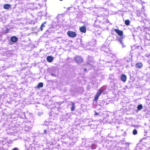
In school, we learn that there are three basic states of matter: solid, liquid and gas. But there’s actually a fourth state – plasma – and it’s quite distinct from the other three.
Plasmas form when matter is exposed to a rapid increase in heat or electricity flow. They’re made up of broken-down atoms, which means negatively charged electrons and positively charged ions, in a free-moving dance governed by electromagnetic fields and forces. And they make fantastic light shows. Think plasma balls, neon lights, lightning, the Sun. All of these are plasmas of increasing temperature and brightness. In fact, 99.9 per cent of the known observable Universe (that isn’t dark energy or dark matter) is in the plasma state. That’s all the stars, interstellar dust clouds, jets, and other deep space formations that we see in the beautiful images captured by telescopes.
The most extreme temperature plasmas are at the edges of black holes, where atoms are ripped apart and dragged to almost the speed of light as they circulate inwards to the dark abyss. Astro-plasma physicists have long dreamt of being able to study these fascinating features of our Universe experimentally, up close, with all the tools of a laboratory environment.
And now, a global team led by the University of Oxford with collaborators from across Europe have achieved that dream using one of the research facilities at CERN. The breakthrough, published in Nature Communications, describes how they used the Super Proton Synchrotron (aka particle smasher) to generate a high-density, electron-positron plasma. The electron and positron mix that formed, being a matter and anti-matter pair, together with the high number of particles present means they created, momentarily, a tiny blob of matter in a lab underneath Geneva that behaves like a true astrophysical plasma.
Given that no space probe would survive a close encounter with a black hole, this lab-astro approach is the only way to test what we know about these regions of the universe. This breakthrough paves the way for experiments that could make new discoveries about how the universe fundamentally works.
This article is from New Humanist’s autumn 2024 issue. Subscribe now.


